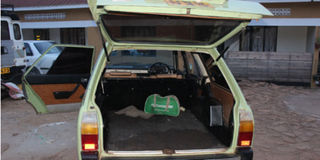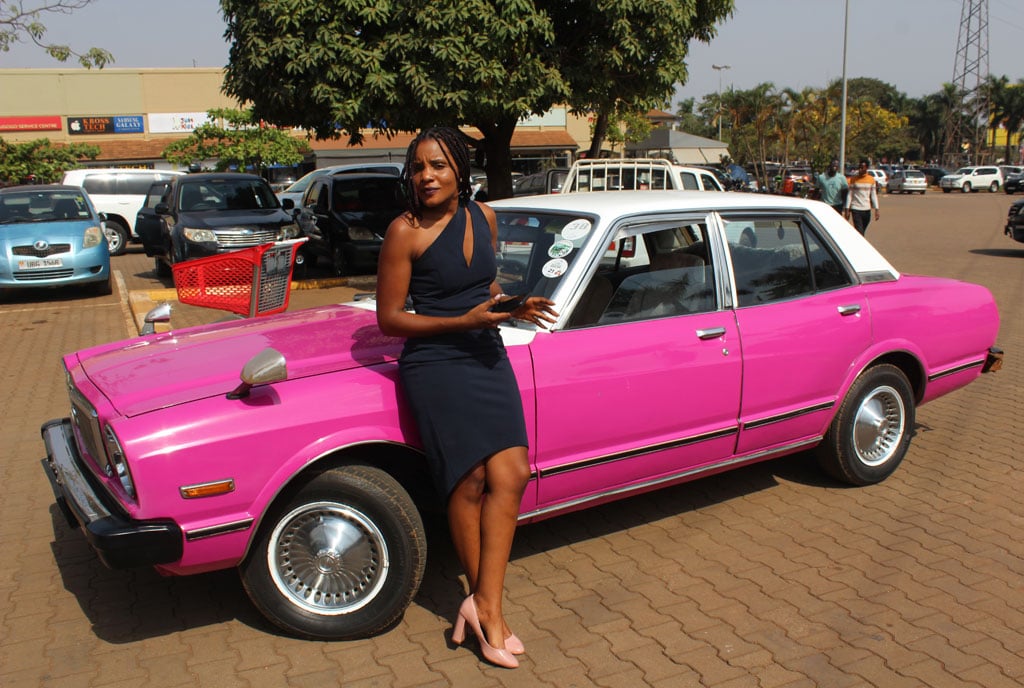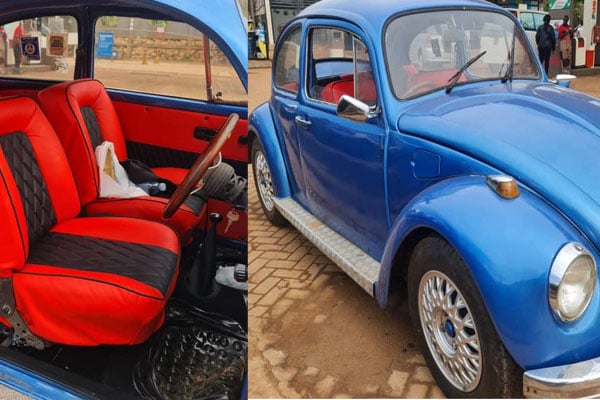Prime
‘When I travel, my car acts as a hotel’

What you need to know:
Instead of incurring hotel accommodation costs when he travels, Kayiwa camps in his vintage car. With the rear seats reclined, he says, he is able to fit a mattress and sleep comfortably
A number of features draw your attention to Lawrence Kayiwa’s Peugeot 504. One of these is its length that can be compared to that of a Toyota Mark II Grande as well as its long trunk that is big enough to fit a mattress. The other feature is perhaps its six-character number plate (UWM 945).
Kayiwa’s Peugeot is a 1975 model that runs on a four-speed manual transmission engine. The car was bought in Jinja City after a tip off from Peter Odong, Kayiwa’s friend. He adds that some of the challenges of maintaining such cars in Uganda is difficulty sourcing spare parts and shortage of mechanics who understand the technicalities of vintage cars.
“When I bought it, the body had rusted and there was a lot of welding done to put it back in shape. I also replaced the seats because they were completely damaged and had to rework the interior right from the dashboard, roof and the floor,” Kayiwa says, adding that although it can be driven, there is a lot more he needs to do.
“Restoring such cars never ends. I have been contacted by many who wish to hire it for functions and artistes who would like to use it in their music video shoots but I refuse because I want it to be perfect first,” Kayiwa adds.
Upcountry car
Running on a 1,800cc petrol engine, Kayiwa has driven the Peugeot 504 from Kampala City centre to Mbarara City in western Uganda and Jinja City in eastern Uganda and many other places. On all these journeys, he says, it has never developed a single mechanical problem.
It is a fast car with a 240km/hr speed limit. The Peugeot 504 was commonly used as a commuter taxi on Masaka Road because it only required approximately 45 minutes to drive from Kampala to Masaka District.
Easy to repair
The beauty with vintage cars, Kayiwa explains, is that they are not electric unlike most modern cars. The Peugeot 504 is completely mechanical. Whenever you open the engine bonnet, it has few components and wires around the engine compartment. This, Kayiwa emphasises, makes its repair fast and easy since a computer diagnosis is not required.
“From a mechanical background, it has taught me a lot of things. For instance I had not familiarised myself with car carburetors. I acquired two other vehicles that all run on carburetors. I do most of the repair work myself and mechanics cannot cheat me because I understand everything about the car,’’ Kayiwa argues.

Kayiwa says because he can easily fit a mattress in his car, he usually sleeps in it while travelling. PHOTOs/Roland D. Nasasira
Cost
Max Opitre, a vintage car enthusiast, says the expenditure on project cars such as Kayiwa’s is difficult to calculate or even budget for. This is because restoration is done in phases that in most cases, you lose accurate count of how much you have spent.
To support this argument, Kayiwa says for the two and a half years he has had his car, he has spent between Shs6m and Shs8m, not including the cost of acquiring it from the junkyard in Jinja City.
Spare parts
Kayiwa mostly buys spare parts from Kenya and some parts, such as the carburetor and cylinders he bought in France where he had travelled with the Ugandan National Rugby team. There, he says, the parts were cheaper compared to local dealers.
Kayiwa also gets some spare parts from a dealer in downtown Kampala. However, he says, these are costly and not readily available. He is also a member of the vintage and classics cars WhatsApp group where members share a lot of information, including sources of spare parts and mechanic contacts.
“When I buy spares such as side mirrors, they have to be in pairs, not a single piece. My car has silver rims whose wheel caps are not common and its initial front silver bulbar or guard. It still has its original steering wheel as well as head and rear lights. What I am doing is making additions to the car and replacing non-functional parts,” he says.
Old is gold
Driving the Peugeot, Kayiwa says, comes with a special feeling. Wherever he goes, it is admired. Although he has not filled it to full tank capacity, he estimates it can carry up to 50 litres of fuel. It has no radio but also uses an ordinary fan that opens to let in air and closes when you do not need it.
“Sometimes when I travel upcountry, I camp in the car instead of sleeping in hotels. It has a soft mattress that I lay at the back and recline the rear seats to create one long bed,” Kayiwa adds.




